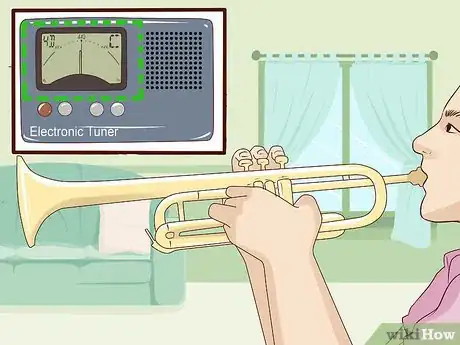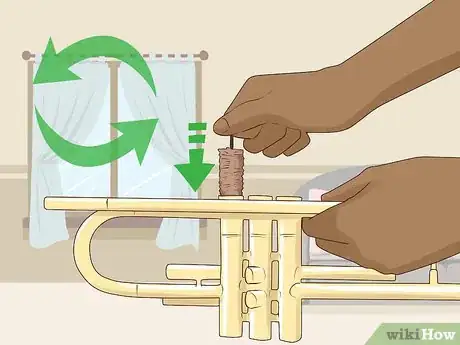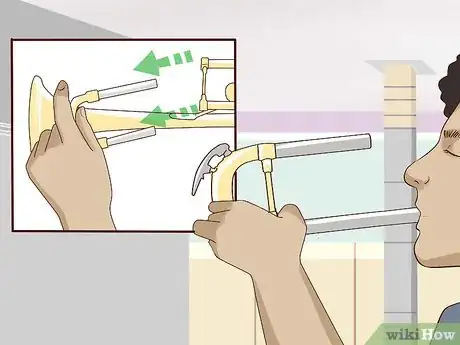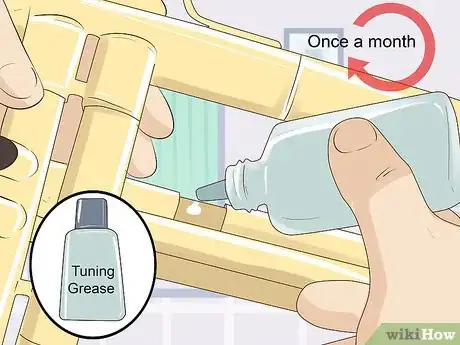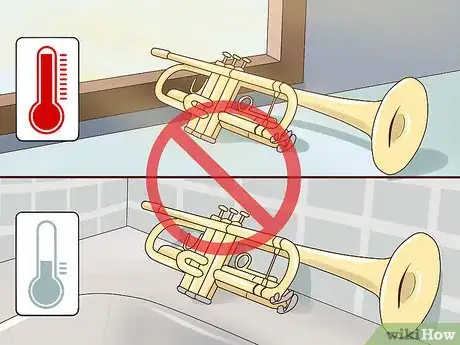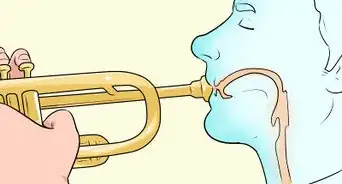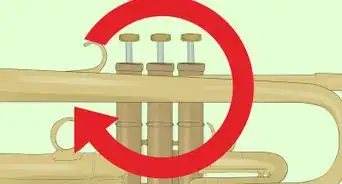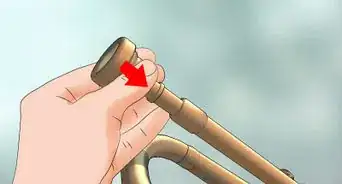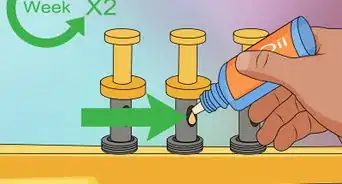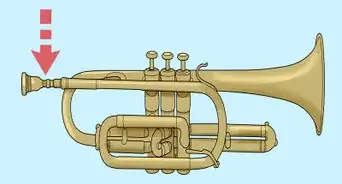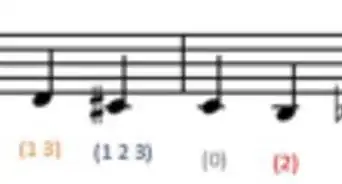This article was co-authored by wikiHow Staff. Our trained team of editors and researchers validate articles for accuracy and comprehensiveness. wikiHow's Content Management Team carefully monitors the work from our editorial staff to ensure that each article is backed by trusted research and meets our high quality standards.
This article has been viewed 37,839 times.
Learn more...
Making sure your trumpet's in tune is key to playing and practicing well. Luckily, tuning a trumpet is simple once you know the right technique. By adjusting its C note through the tuning slide, you can tune the trumpet to make sure it isn't too flat or too sharp. By tuning and maintaining your trumpet, you should be able to produce a clear sound.
Steps
Using a Tuner
-
1Use an electronic tuner or a tuning app to tune your trumpet. A tuner will help you recognize flat or sharp notes and adjust them as needed. Depending on your preferences, you can either use an electronic tuner or download a tuning app on your phone.[1]
- As you practice tuning your trumpet, you may develop an ear for what does or doesn't sound right over time. To make sure you have the right notes, however, a tuner is always a useful tool.
- You can buy tuners online or from most music stores. A basic tuner will do—you do not need to purchase specialty tuners for trumpets.
-
2Locate your trumpet's tuning slide. The tuning slide allows you to adjust your trumpet's sound. The tuning slide is located directly below the trumpet's bell and is shaped like a large, metal loop.[2]
- If you're unsure where your tuning slide is, ask a music instructor or a fellow musician for help.
Advertisement -
3Set your tuner to a C note. Although you can play any note to check the trumpet's tune, the C note is the simplest note to play and the easiest to check. Adjust your tuning app or tuner to C to make sure it analyzes the right note.[3]
- If you're not sure how to adjust the tuner's note, check its directions or contact its manufacturers, if needed.
-
4
-
5Adjust the note as needed using the slide. If your note is flat or sharp according to the tuner, you can easily adjust the sound. Pull the slider in to make the sound sharper, or pull it out to make it flatter.[5]
- Instead of saying flat or sharp, your tuner may use the symbols "♯" or "♭." The first stands for sharp and the latter for flat.
-
6Play the C note again and check your tuner readings. After adjusting the trumpet's sound using the tuning slide, play the C note again. Check the note on your tuner again and, based on the readings, pull the tuning slide in or out again as needed.[6]
- If you want, you can repeat this process with several other notes to make sure the trumpet is in tune, though this is not necessary.
Maintaining a Trumpet's Tune
-
1Clean your trumpet regularly. Cleaning your trumpet will keep it in good condition and prevent it from breaking or getting out of tune. At least once a month, disassemble your trumpet and wash off the pieces using a warm washcloth. Then, use a polishing cloth to dry the trumpet and give it an added shine.[7]
- Drying your trumpet after washing it will prevent rusting to keep your trumpet's sound clear.
-
2Test the tuning slide for suction while cleaning it. Disassemble your trumpet and block one end of the tuning slide with your fingers. Suck on the other end of the trumpet to check for suction—if you notice any air leaking out of the tuning slide, your tuning slide may be broken or dented.[8]
- A broken tuning slide can seriously affect your trumpet's tone. If you think your tuning slide is broken, hire a music shop or instrument repair service to inspect it for damage and make the necessary repairs.
-
3Grease the tuning slide once a month. Remove the tuning slide from the trumpet and apply a thin coat of tuning grease around the exterior. Spread the tuning grease around with your fingers until the coat is even, then wipe off any excess grease with a washcloth. When you're done, place the tuning slide back on the trumpet.[9]
- You can buy tuning grease online or from most music stores. If you cannot find tuning grease, you can use petroleum jelly as a substitute.
- The coat should be thick enough that you can feel it with your fingers, yet thin enough that it stays transparent.
-
4Avoid placing your trumpet in hot or cold environments. Extreme temperatures can warp your trumpet's pitch and intonation, requiring it to be tuned more often. To prevent a frequent need for tuning, store your trumpet in a room-temperature environment and keep it away from extremely hot, cold, or humid climates.[10]
- Cold weather tends to make trumpets go flat while hot weather tends to make them go sharp.
Warnings
- Your trumpet may be broken if no matter of adjusting the tuning slide seems to affect its sound. Bring your trumpet into a music store or instrument repair service to determine whether it needs repairs.[11]⧼thumbs_response⧽
References
- ↑ http://www.get-tuned.com/tuning_science.php
- ↑ https://www.youtube.com/watch?v=FifaT8GARMI&feature=youtu.be&t=22
- ↑ https://www.youtube.com/watch?v=uzId39PvTg8&feature=youtu.be&t=33
- ↑ https://www.youtube.com/watch?v=uzId39PvTg8&feature=youtu.be&t=33
- ↑ https://www.youtube.com/watch?v=uzId39PvTg8&feature=youtu.be&t=33
- ↑ http://www.get-tuned.com/tuning_science.php
- ↑ https://www.nemc.com/instrument-care-instructions/trumpet-care
- ↑ http://vapa.sweetwaterschools.org/files/2013/07/TrumpetMaintenance.pdf
- ↑ http://www.zacharymusic.com/Zachary_Music/TRcarePics.htm





